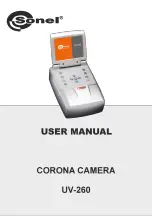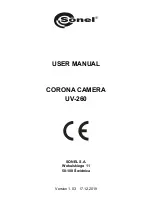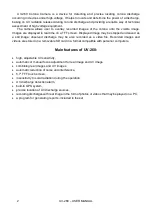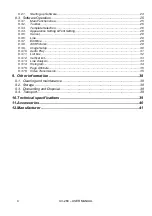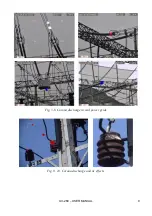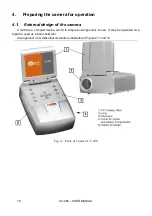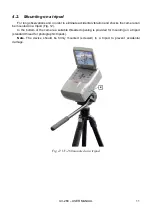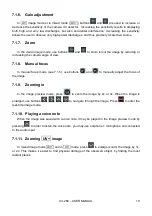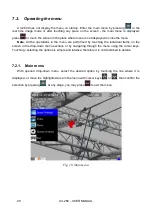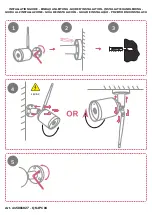
UV-260
– USER MANUAL
7
3.2.
Mechanism of corona discharge
Corona discharge is a current flow, usually in the air, from a discharge electrode which is under
high voltage.
High voltage is a source of air ionization, which creates plasma around the electrode - it is
ionized matter containing electrically charged particles. The resulting ions carry the load to places
of lower potential.
If the discharge electrode, which may be any object under high voltage, has a proper
"sharpened" shape, then a high potential gradient is generated around this part generates, which
may lead to a discharge. At very high voltage it may be a spark or arc - if a 'plasma channel' is
created. In contrast, corona discharge is formed when a voltage that causes ionization is too low at
the moment to create the plasma channel.
The discharge is invisible in daylight (in total darkness - rarely occurring in outdoor conditions -
it is hardly visible as a blue-violet afterglow), as most of the radiation generated is in the ultraviolet
range, invisible to human eye, and therefore, the development of UV radiation detectors causes
gradual replacement of acoustic-based detection methods with UV-based detectors.
Corona discharges generate the electromagnetic spectrum in the range of 200
…405 nm; solar
radiation also contains (in addition to visible light) both infra-red and ultraviolet radiation. Using an
appropriate filter (wavelength range of 240
…280 nm) suppress UV radiation generated by the sun,
so the camera may operate well in daylight without interference.
Fig. 2: The spectrum of corona discharge
Depending on the polarity of the discharge electrode, the corona discharge may be positive or
negative. In case of both negative and positive discharges, photons are the main source of
electrons. These photons are formed by induced atoms creating plasma, which return to lower
energy states, therefore the equipment is scaled in "UV photons."
Range filtered by the
camera
Solar radiation spectrum
Visible light
Ultraviolet
Wavelength (nm)
Summary of Contents for UV-260 Corona Camera
Page 1: ......
Page 2: ...2...
Page 44: ...UV 260 USER MANUAL 42 NOTES...
Page 45: ...UV 260 USER MANUAL 43 NOTES...
Page 46: ...UV 260 USER MANUAL 44 NOTES...
Page 47: ......
Page 48: ...46...

